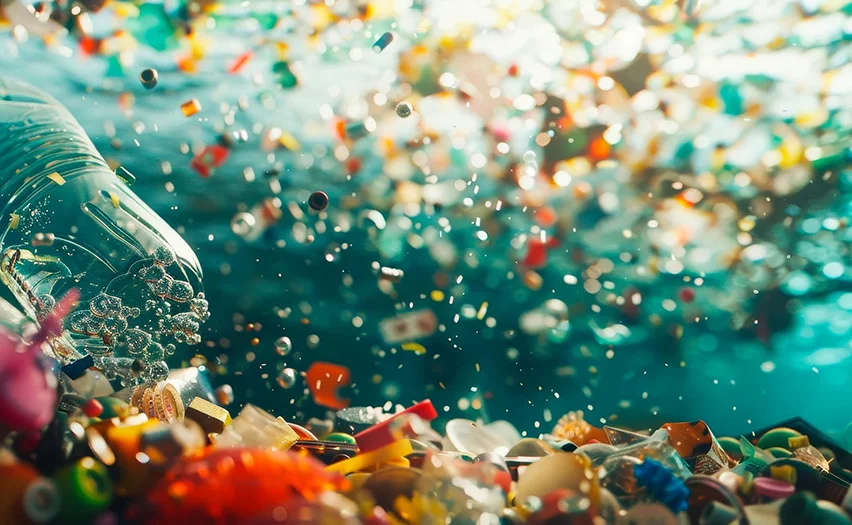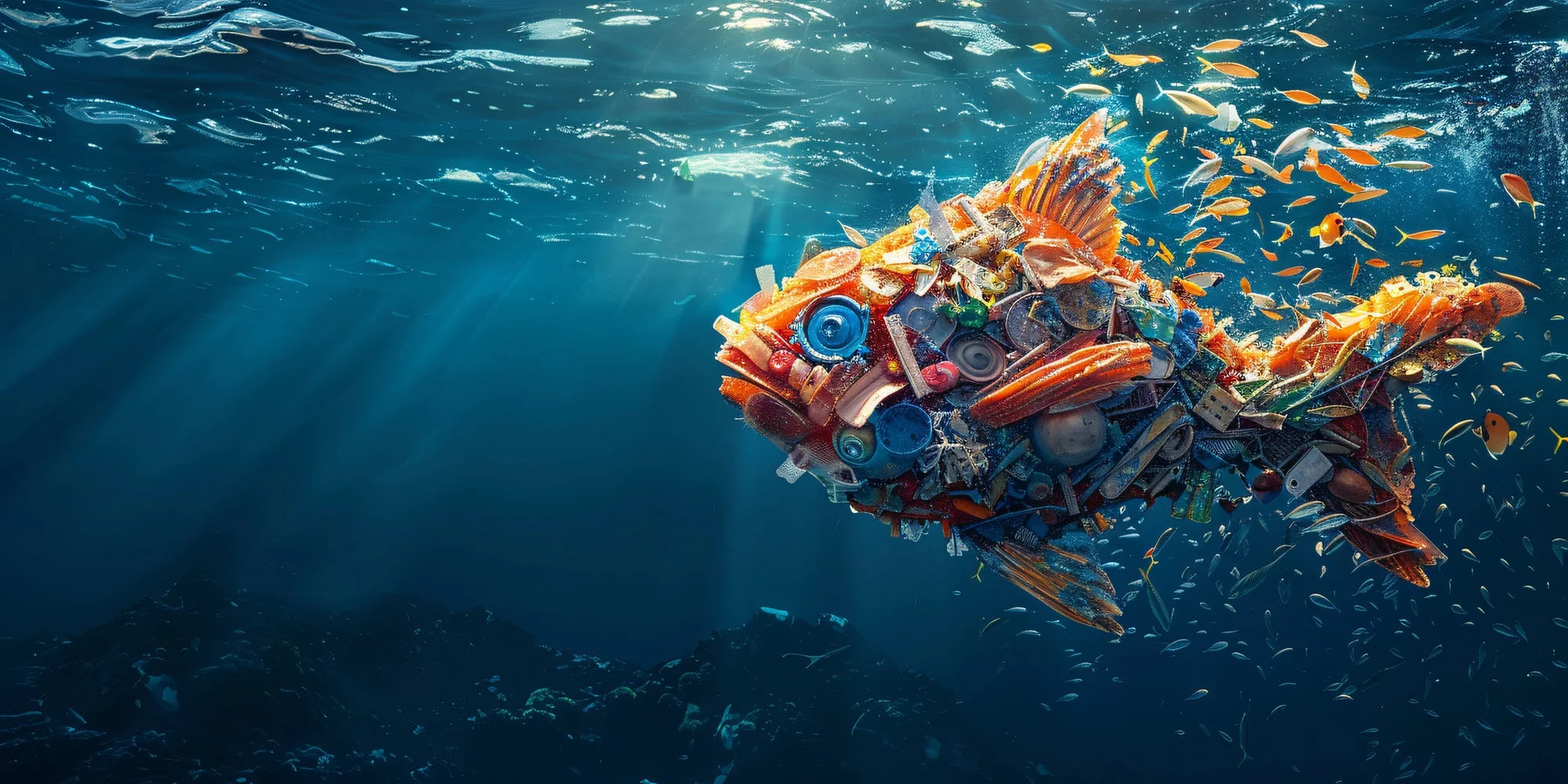June 8 is celebrated as World Oceans Day and we at Durli Leathers are dedicating this day to reflecting on the relationship between leather and reducing marine pollution.
There would seem to be no connection between the two. After all, leather is, by its very nature, a sustainable, recyclable and biodegradable material.
In addition, the modern leather industry is changing every day, making the entire production chain more sustainable, from monitoring the raw material to developing eco-friendly products and processes, saving water, energy and treating waste and effluents.
Specifically with regard to effluents, they must be 100% treated so that they can be properly disposed of in watercourses. Most of these will end up in the oceans.
In other words, the leather industry is looking to "further refine its practices to become environmentally friendly and economically viable."
However, this article aims to delve a little deeper into the relationship between leather and the reduction of marine pollution.
Leather and reducing marine pollution: the fundamental importance of natural leather in the face of the fallacy of imitation leather

In order to reflect on leather and the reduction of marine pollution, the article Natural leather or Faux Leather for Furniture: Durability, Comfort and the Environment in Question provides a very enlightening comparison between natural leather and imitation leather.
Among the most obvious are:
Natural leather → durability, biodegradability, repairability, reusability and part of the circular economy;
Imitation leather → it is not renewable, much less biodegradable, and takes hundreds of years to start decomposing in nature.
However, the main issue to be addressed, especially on World Oceans Day, is the fact that imitation leather contains PU or PVC plastics, involving in its production other chemicals that are harmful to workers and the environment.
Imitation leather and the risks of marine pollution
Even more seriously, synthetic options, produced from petrochemical products, especially plastics, are rapidly contributing to ocean pollution.
The article Microplastics pose risk to ocean plankton, climate, other key Earth systems, released by the non-profit organization Mongabay, states that "358 trillion microplastic particles in the ocean threaten marine life, from large filter feeders to tiny plankton. While not lethal in the short term, the long-term impacts of microplastics on plankton and marine microbes can disrupt key Earth systems such as ocean carbon storage and the nitrogen cycle."
These figures are even higher in the deeper regions.
On the other hand, microplastics are easily ingested by marine fauna, from large filter-feeding animals to tiny organisms at the bottom of the food chain, such as phytoplankton and zooplankton.
It is estimated that currently 12 million metric tons of plastic are dumped into the ocean every year. This plastic waste gradually disintegrates into smaller and smaller fragments - the aforementioned micro- and nanoplastics.
Although less visible, they have serious effects on marine ecosystems and pose a threat to the stability of the Earth's climate.
Another dangerous consequence of this pollution is the acidification of the oceans.
According to the Water Treatment Portal, "new research claims that plankton itself is directly linked to the creation of dangerous nanoplastics that can be spread throughout the world's waters".
It is therefore more necessary than ever to emphasize the important relationship between leather and the reduction of marine pollution.
Only natural leather can contribute to the preservation of life in the oceans and, by extension, the entire planet.
Marine pollution in numbers
The article Leather is essential for the circular economy: 13 reasons why", quoting an article by SEBRAE-SP, translates the worrying reality of our oceans into figures. Let's take a look at some of them:- By 2050 there will be more plastic in the oceans than fish;
- Plastic is responsible for the death of 100,000 marine animals every year;
- 91% of the plastic used in the world is not recyclable.
The Sustainable Development Goals, leather and reducing marine pollution
According to what we've seen so far, our oceans are under threat. Meeting the challenge of reversing this situation requires an effort of international dimensions.
Such is the commitment of the United Nations - UN - itself through the development of the SDGs - Sustainable Development Goals.
The global organization Leather Working Group - LWG - which certifies leather industries according to their actions related to sustainability, has brought together in a single document the SDGs that address climate change, protect our natural environment, improve health and education, reduce inequality and stimulate economic growth.
Let's take a look at the SDGs related to water and how leather manufacturers can contribute to reducing marine pollution and receive their LWG certification:
Goal 6 - Clean water and sanitation
The LWG assesses leather manufacturers on water consumption, water treatment and wastewater disposal, with the aim of increasing water use efficiency and reducing pollution.
Goal 14: Life in the water
LWG certification assesses leather manufacturers for the use of hazardous chemicals and endorses the ZDHC's Manufacturing Restricted Substances List (MRSL) for leather. It also monitors the volume, composition and final disposal site of a facility's effluent, thereby reducing the discharge of potentially polluting or contaminating substances into marine environments.
How Durli takes a stand on leather production and reducing marine pollution
Tirelessly, Durli's management has dedicated itself to putting leather production methods into practice, as well as to adopting increasingly ecological and sustainable tanning products.
Its LWB Gold and ISO 9001 certifications are the recognition of this dedication, thus contributing to the progress of the leather industry in Brazil, Paraguay, Mexico and the world.
On this World Oceans Day, it is imperative that we reflect on the binomial of leather and the reduction of marine pollution.
Microplastics are obviously a significant challenge, but they also represent an opportunity for the leather industry to reaffirm its commitment to sustainability.
There is no doubt that it is possible to align prosperous business with environmental protection.
By choosing natural leather, companies can reduce the demand for harmful synthetic materials and promote a more responsible production cycle.
Contact Durli so that together we can celebrate World Oceans Day with the awareness that we are contributing to a safe and sustainable planet!
Sources and references used:
1 - https://isitleather.com/blog/sustainability-leather-tanning-industry-progress-potential/
2 - https://www.sp.senac.br/blog/artigo/plastico-no-meio-ambiente

